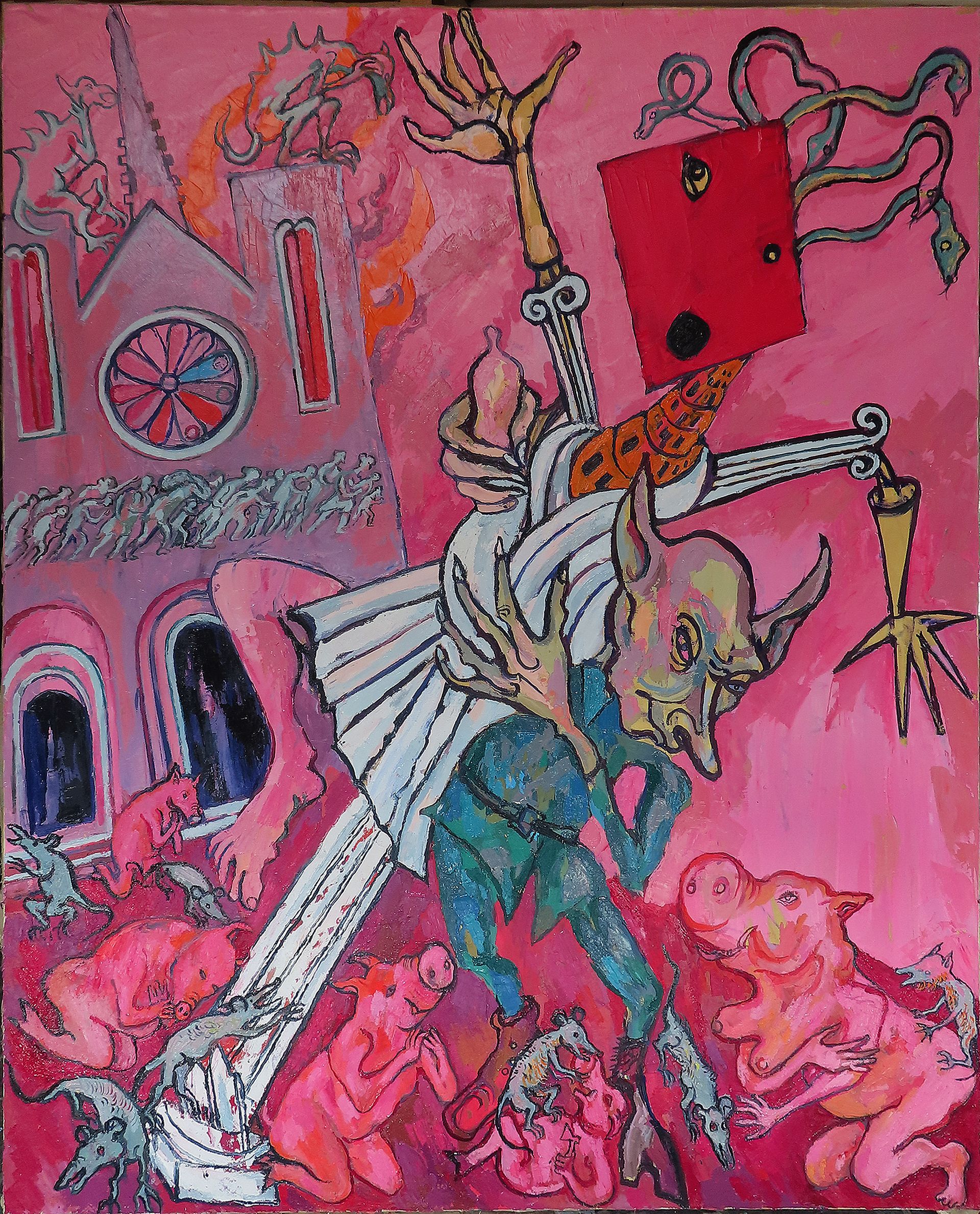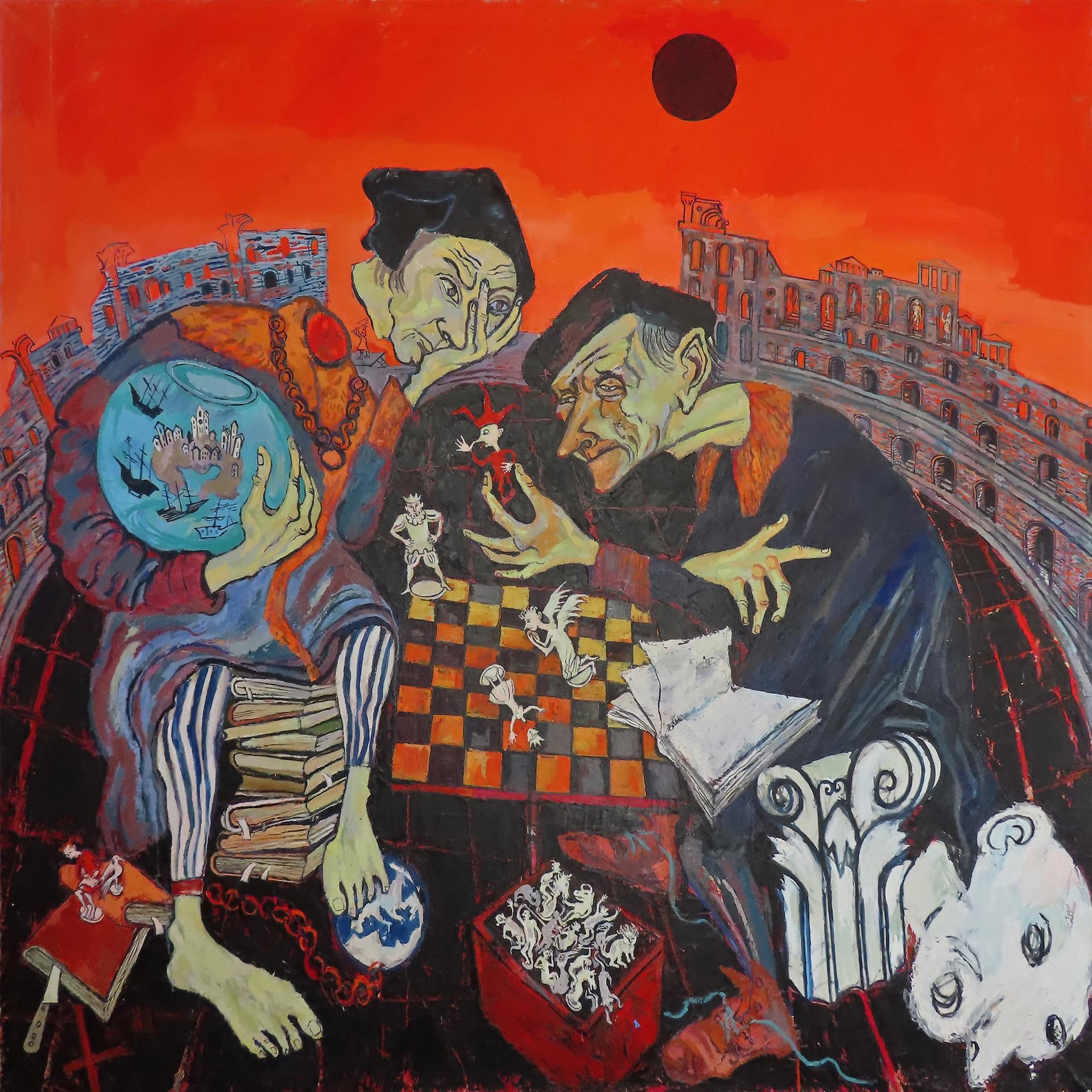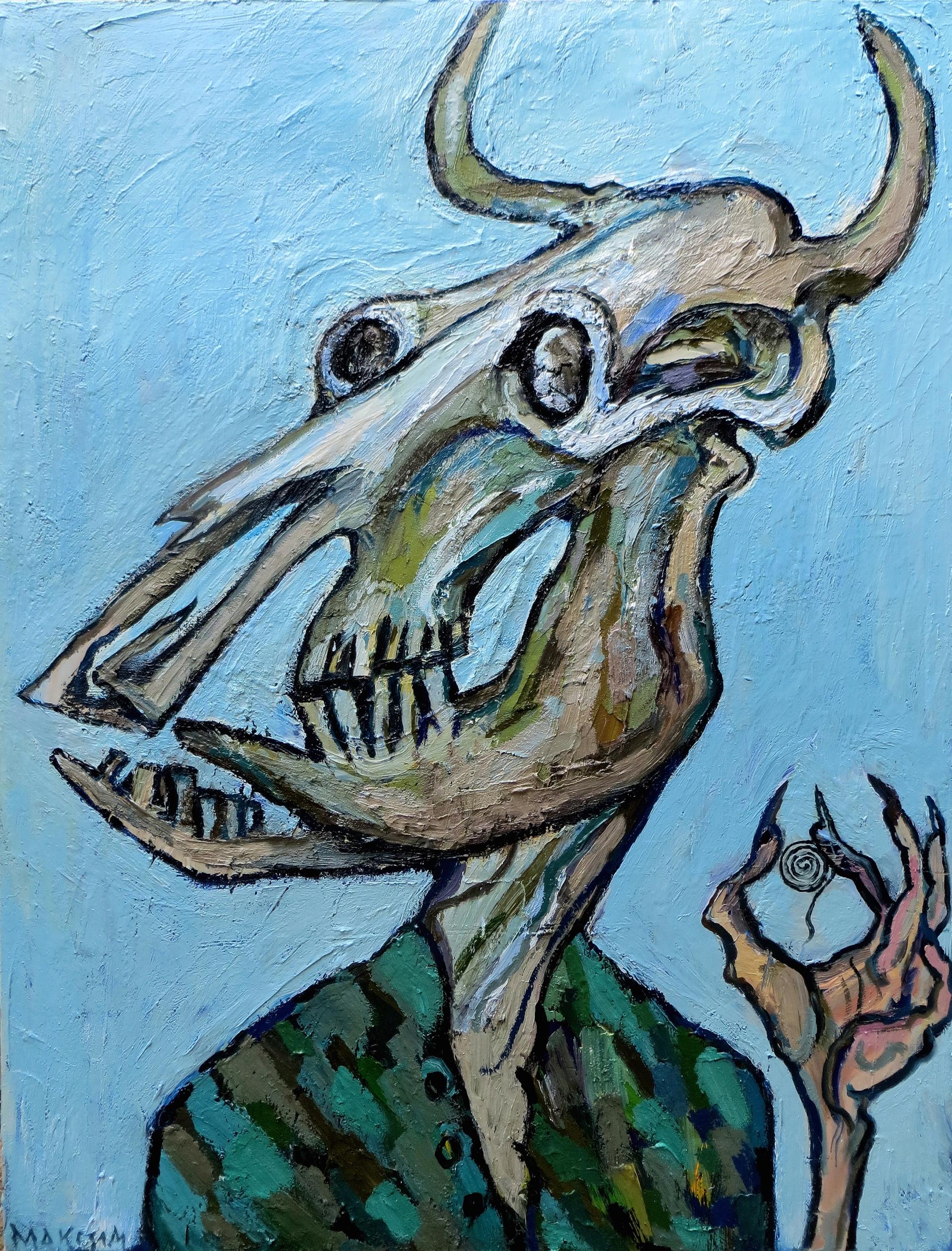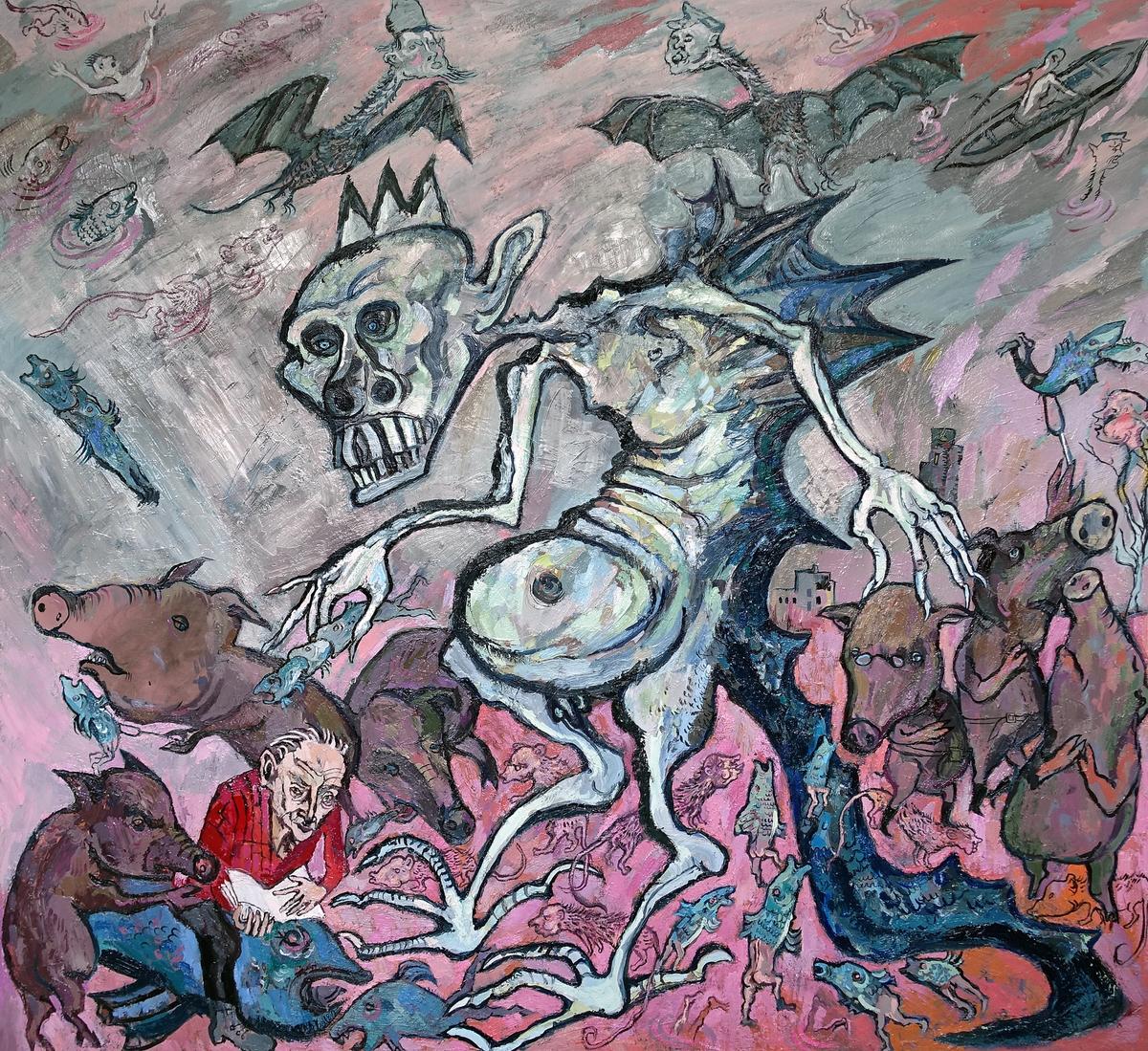Unknown Russian artists have staged protests on live television or put on performances in front of the Kremlin. Today, their whereabouts are unknown. But how many famous Russian artists have protested Vladimir Putin’s invasion of Ukraine? One is, at least.
Maxim Kantor was raised in Moscow but has since left Russia. He was educated at the Moscow State University of Printing Art and is a member of the Russian Academy of Art. In 1997, he represented Russia at the Venice Biennale. He was once asked by Putin’s regime to be a Russian state Commissar for the Arts.
Yet today, at the National Museum of History and Art in Luxembourg, an exhibition of Kantor’s paintings will go on display—and the title of the exhibition could not be more pointed: The Rape of Europe. The exhibition will be on show until 16 October.

Maxim Kantor's The Rape of Europe (2022) © Maxim Kantor, courtesy of the artist
The exhibition, Kantor says in an interview, was put together in six weeks “under emergency conditions.” It features works the artist created as recently as this year and is staged with an ambition: to “unmask” the Russian regime, and to awaken us—the citizens of Europe—to the dangers we, as a continent, face from the Kremlin. “Ukraine is under attack. But Europe is under attack as well,” Kantor tells The Art Newspaper. “We do not yet realise this, and we simply have to.”
Kantor’s paintings are as confrontational as his title; ghoulish and haunting denouncements of “this vile war of Neo-feudal lords,” he says. They are Russian paintings, he adds; created in the legacy of Tolstoy and Pasternak. They are narrative-led, and made to shake us from our complacency. “The war was not a surprise to me,” Kantor says. “It is one of the links in the chain. It is not the first event and will not be the last event.”
Yet the exhibition is more than just an anti-war statement; it challenges us to ask if we are complicit in the "rape" of Europe. “Today, there is a lot of talk that this war can break the Putin regime,” Kantor says. “But no one talks about where this regime came from. No one is talking about how it took root in our world order.”

Maxim Kantor's Erasmus and Thomas More © Maxim Kantor, courtesy of the artist
How has the art world enabled Putin? How guilty is the art world in letting Russian influence embed itself into our capitals? These are difficult questions—and Kantor is intent on facing them head on. “I dream of a post-war trial that would show how ‘contemporary art’ participated in the preparation of cannon fodder,” Kantor writes in the show’s introductory text. “I dream of a trial that would reveal the mechanism of the art market, which turned bankers into artists in the service of a tyrant.”
“These are explicitly political pictures,” says Stephen Whitefield, a professor of politics at the University of Oxford, and a friend of Kantor’s. “They were made as a response to Russia’s perverted integration into Europe and the Western economy.”

Maxim Kantor's Minotaur (2014) © Maxim Kantor, courtesy of the artist
Russia's invasion of Ukraine has thrown into question the very purpose of institutional exhibitions, the museum’s director Michel Polfer says.
“Tens of thousands are dead, cities are partially razed, millions of Ukrainian refugees are wandering across Europe. How to react, as a museum?” Polfer asks when introducing the show. “How to show a sign of solidarity with the oppressed, when direct cooperation with a Ukrainian museum is currently proving impossible and our own collections contain almost no objects related to this country?”
Kantor says, however, that he retains faith in the people of his homeland. “Putin sees his people as stupid puppets,” he says. “He thinks of them as pawns on his chess set. The Russian people have been robbed and cheated and fed lies, but they cannot be lied to when their children are dying in Ukraine.”
The pictures on show, Kantor adds, are “dedicated to the people who have been oppressed by the Russian state” for it is them who can end the war, Kantor says. “There are many Russian people who are against this bloody war,” he says. “I can tell you that. They are waking up, and they will resist.”
• The Rape of Europe is staged in collaboration with the Luxembourg Red Cross, and donations are sought from visitors


